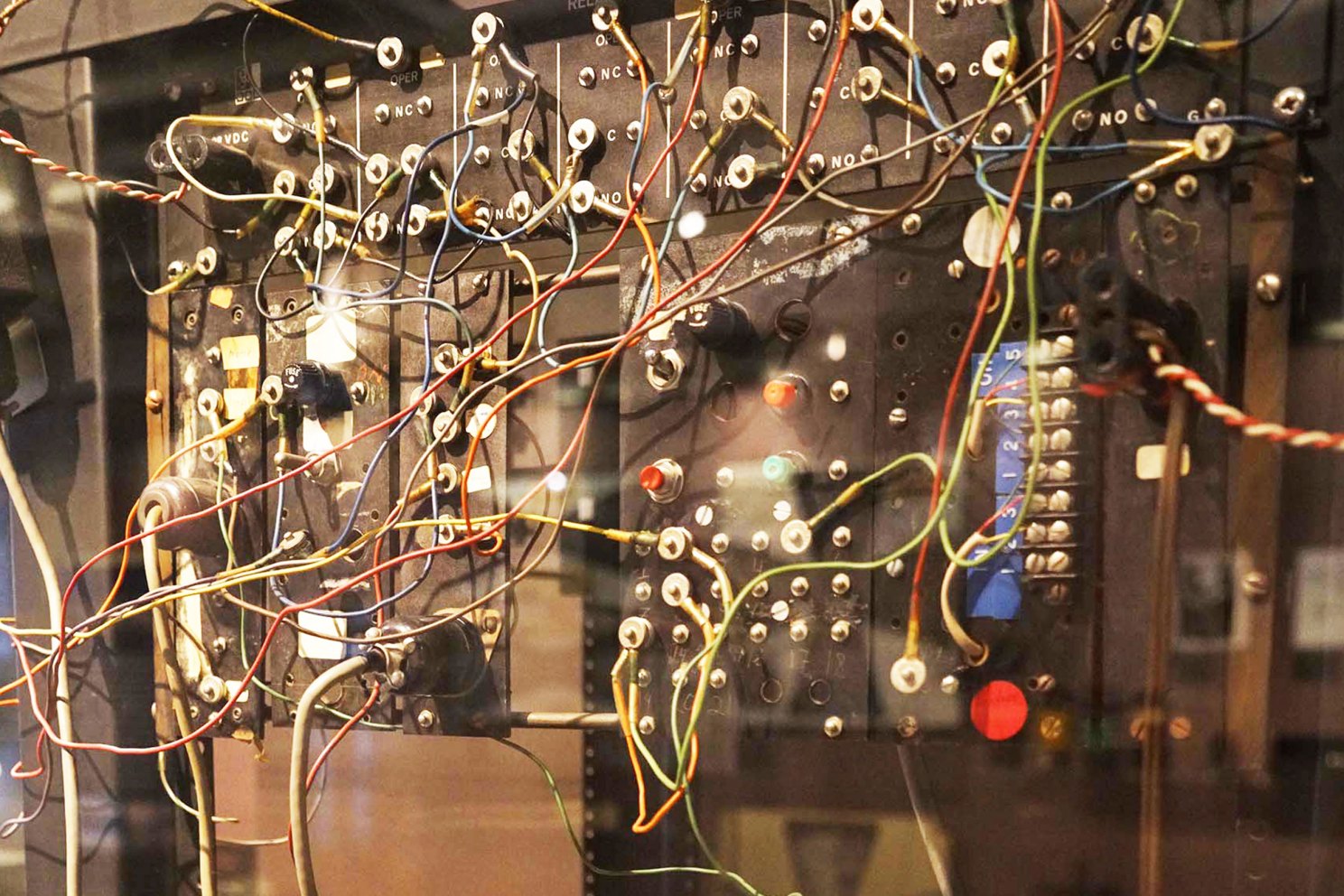‘Surveillance: From Vision to Data’ explores the history of surveillance

Detail of instrument rack with operant chamber and control relays, ca. 1983; B.F. Skinner (1904-1990) Department of Psychology, Harvard University; Collection of Historical Scientific Instruments. Photo by Bethany Carland-Adams
The term surveillance may suggest images of high-tech cameras or George Orwell’s ever-watching Big Brother, but surveillance involves more than watching and being watched. To understand surveillance and its consequences, look to data: who collects it, what information is compiled, how it is interpreted, and ultimately, why it matters. The new exhibition, “Surveillance: From Vision to Data,” opened at the Collection of Historical Scientific Instruments on Sept. 22. The exhibition delves into the multifaceted concept of surveillance, exploring its historical origins, impact on society, and evolution into the digital age.
Throughout history, scientists have created diverse instruments for producing and analyzing data. Colonial powers, intelligence agencies, and corporations alike have in turn wielded these techniques for surveillance — to oversee land, to make certain people visible, and to control behavior. The effects of surveillance through data have been both subtle and overt, from enabling new forms of discipline to entrenching social hierarchies.
The exhibition exposes data’s profound and ongoing influence, revealing an elusive and ubiquitous form of visibility. Curated by graduate students at Harvard’s Department of the History of Science and Harvard’s Department of Art, Film, and Visual Studies, the exhibition explores this story by presenting critical contemporary artworks and historical surveillance instruments side-by-side.
[gz_photo_layout_hanging_cap image=”365015″ caption=”From%20left%3A%20Peter%20Galison%2C%20Joseph%20Pellegrino%20University%20Professor%20in%20History%20of%20Science%20and%20Physics%3B%20curator%20Carolyn%20Bailey%2C%20Ph.D.%20candidate%20in%20Film%20and%20Visual%20Studies%3B%20Hannah%20Marcus%2C%20John%20and%20Ruth%20Hazel%20Associate%20Professor%20of%20the%20Social%20Sciences%20and%20interim%20faculty%20director%20of%20the%20Collection%20of%20Historical%20Scientific%20Instruments%3B%20curator%20Aaron%20Gluck-Thaler%2C%20Ph.D.%20candidate%20in%20the%20History%20of%20Science%3B%20curator%20Matt%20Goerzen%2C%20Ph.D.%20student%20in%20the%20History%20of%20Science%20Department.%0A” credit=”%20Photo%20Credit%3A%20EJSP%20Visual%20%7C%20Julieta%20Sarmiento%20″ /]
Aaron Gluck-Thaler, curator: “Surveillance is often understood through its most visible forms, from cameras to prying eyes. This exhibition foregrounds a more complex history. Surveillance depends on data: technologies for producing data, techniques for analyzing data, and ways of making sense of data. ‘Surveillance: From Vision to Data’ assembles a diverse collection of scientific instruments and places them into their multiple historical contexts. What emerges from their intertwined histories is unmistakable. The history of surveillance is inseparable from scientific knowledge production about data, with enduring consequences for how people and the world become known today.”
Matt Goerzen, curator: “Surveillance: From Vision to Data” explores how the data produced through surveillance practices can serve a range of outcomes. A single dataset can be made to mean different things — as when measurements of human bodies are used to support contradictory conclusions, or when an individual’s self-collected health data is suddenly deployed against them in a legal proceeding. The historical narratives and artistic works in the exhibition help us tease out other provocative questions: why are some data acted upon and other data conveniently ignored? And what is at stake when data are not produced at all?”
Carolyn Bailey, curator: “Surveillance mediates many aspects of public and private life. While we tend to think of surveillance technologies as tools of control, they are also tools of witnessing and entertainment. Many of us knowingly use digital apps that violate our privacy because they are fun or offer new insights that allow us to know ourselves and others better. In questioning the historical role of data surveillance practices in shaping the world around us, the exhibition also examines how we adapt to them. Collectively, the works and artists in ‘Surveillance: From Vision to Data’ explore how these tools and technologies can be used, critiqued, and subverted.”
The exhibit incorporates video, photography, and artwork to convey the complexity of surveillance. Artists and activists who have examined the invisible infrastructures of surveillance contribute pieces to the exhibit to present visitors with a layered understanding of the contemporary place of surveillance in society.




